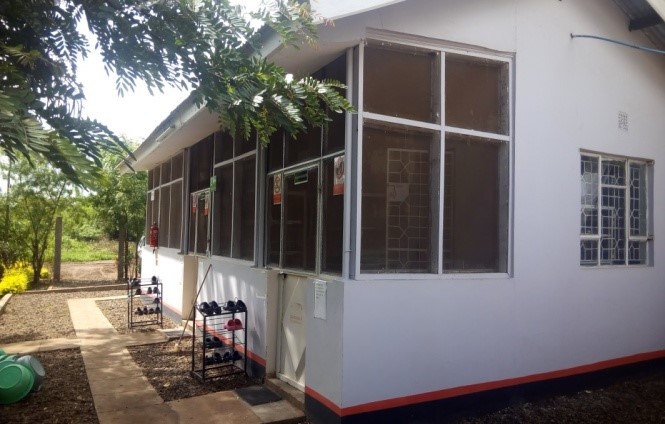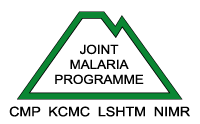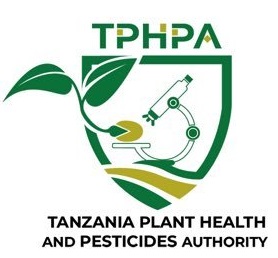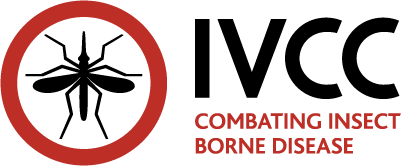Lower Moshi
The station has twenty seven Experimental huts located at three sites (Harusini, Mabogini and Pasua) about 16 km from KCMU College in Moshi town. This is at an altitude of 800m above sea level in an area between the Masai savannah and 5,896 metres high Mount Kilimanjaro. Rainfall is concentrated in March-May accounting for 60% of the annual total (800mm). The remainder falls during October-December. Between the two rainy seasons are a hot, dry season January-February and a cool, dry season June-September.
This is a low malaria transmission area with prevalence of <1%
The surrounding area is dominated by agriculture and irrigated rice farming which is the major activity close to the experimental huts. Paddy fields cover an area of 1,100 hectares. The irrigated fields are a major breeding site for the predominant malaria vector species in the area, Anopheles arabiensis. The nuisance biting and filariasis vector Culex quinquefasciatus is also present at certain times of the year, breeding mainly in latrines and a sewage disposal plant situated approximately 1km away. Anopheles arabiensis mosquitoes in this area are susceptible to most insecticide classes but show pyrethroid tolerance (as defined by WHO 80-100% mortality in susceptibility tests), due to metabolic mechanisms, and resistance to dieldrin. Culex quinquefasciatus in the area show resistance to pyrethroids, carbamates, and dieldrin.
Ambient Chamber
The modified Ambient Chamber Test (with an extension of up to 14 compartments, and window traps in each compartment) facilitate systematic use of characterized mosquitoes, with defined age, species, resistance status andabdominal and abdominal status.. Hence, any variation that is associated with any of these differences can be detected.
This is a low malaria transmission area with prevalence of <1%
The surrounding area is dominated by agriculture and irrigated rice farming which is the major activity close to the experimental huts. Paddy fields cover an area of 1,100 hectares. The irrigated fields are a major breeding site for the predominant malaria vector species in the area, Anopheles arabiensis. The nuisance biting and filariasis vector Culex quinquefasciatus is also present at certain times of the year, breeding mainly in latrines and a sewage disposal plant situated approximately 1km away. Anopheles arabiensis mosquitoes in this area are susceptible to most insecticide classes but show pyrethroid tolerance (as defined by WHO 80-100% mortality in susceptibility tests), due to metabolic mechanisms, and resistance to dieldrin. Culex quinquefasciatus in the area show resistance to pyrethroids, carbamates, and dieldrin.
Ambient Chamber
The modified Ambient Chamber Test (with an extension of up to 14 compartments, and window traps in each compartment) facilitate systematic use of characterized mosquitoes, with defined age, species, resistance status andabdominal and abdominal status.. Hence, any variation that is associated with any of these differences can be detected.

Experimental huts

Field insectary

Paddy field

Moshi Field Station

Ambient Chamber
Local mosquito population resistance profile
| Locality | Insecticide | Mosquito species | Mechanism | Genes/Mutation | Relevant publication |
|---|---|---|---|---|---|
| Moshi(3º21’S, 37º21’E) | Pyrethroids (Permethrin, Deltamethrin, Lambdacyhalothrin) | Anopheles arabiensis | Metabolic resistance (Biochemical assays, Synergy tests) Metabolic resistance (Microarrays and qPCR) | β-esterases, P450s CYP4G16 and ABC ‘2060’ | Matowo et al., 2010 |
| Taregt-site insensitivity | L1014F at very low frequency | Matowo et al., 2014a | |||
| Dieldrin | Taregt-site insensitivity,Point mutation at GABA receptors | Rdl genes | Mahande et al., 2012 |
Handeni Field Station
Handeni field site with seven huts is located in Tanga region, North Eastern coastal of Tanzania. Predominant mosquito species include An. gambiae ss, An. arabiensis and An. funestus. Insecticide resistance: 51% An. gambiae s.s with kdr E mutation. Malaria prevalence is around 35%

Experimental huts
Mwanza field station at Magu
The station is located in Magu district and has six experimental huts and one field house. The huts are located on the southern shore of Lake Victoria at altitude of 1206 meters above sea level. The distance from Mwanza city centre to the field station is 29 kilometres. The area has two rainy seasons (October-December and March-May) interrupted by a distinct long dry season (June to August/September) and second dry season in December or January to February. The main malaria vectors are An.funestus , An.arabiensis and An.gambiae . Experimental huts
Experimental huts
Local mosquito population resistance profile
| Locality | Insecticide | Mosquito species | Mechanism | Genes/Mutation | Relevant publication |
|---|---|---|---|---|---|
| Magu | Deltamethrin | An. gambiae ss | Kisinza et al., 2017 |




















 : P.O Box 2240, Moshi Kilimanjaro, Tanzania
: P.O Box 2240, Moshi Kilimanjaro, Tanzania :
: :
:  E-project Library
E-project Library  : Data Management
: Data Management